#{Title}
#{Copy}
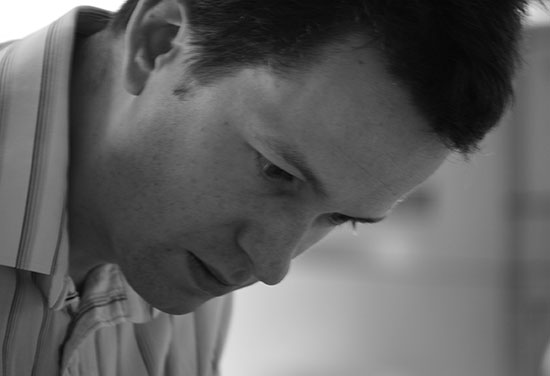
Oldham Town Hall’s refurbishment design team leader, Andrew Capewell, explains how sensitively handled collaboration enables bold adaptive reuse of listed historic buildings, bringing new life to the structures and their settings.
Working with treasured historic buildings is a specialised architectural skillset. When those buildings fall into disrepair, through their inability to adapt to a changing context, the challenge increases. Weaving new uses into their fabric can be hugely difficult - not only in terms of achieving the onerous technical demands of modern buildings but also of balancing the desire for new intervention against the need to preserve the integrity of the original structure.
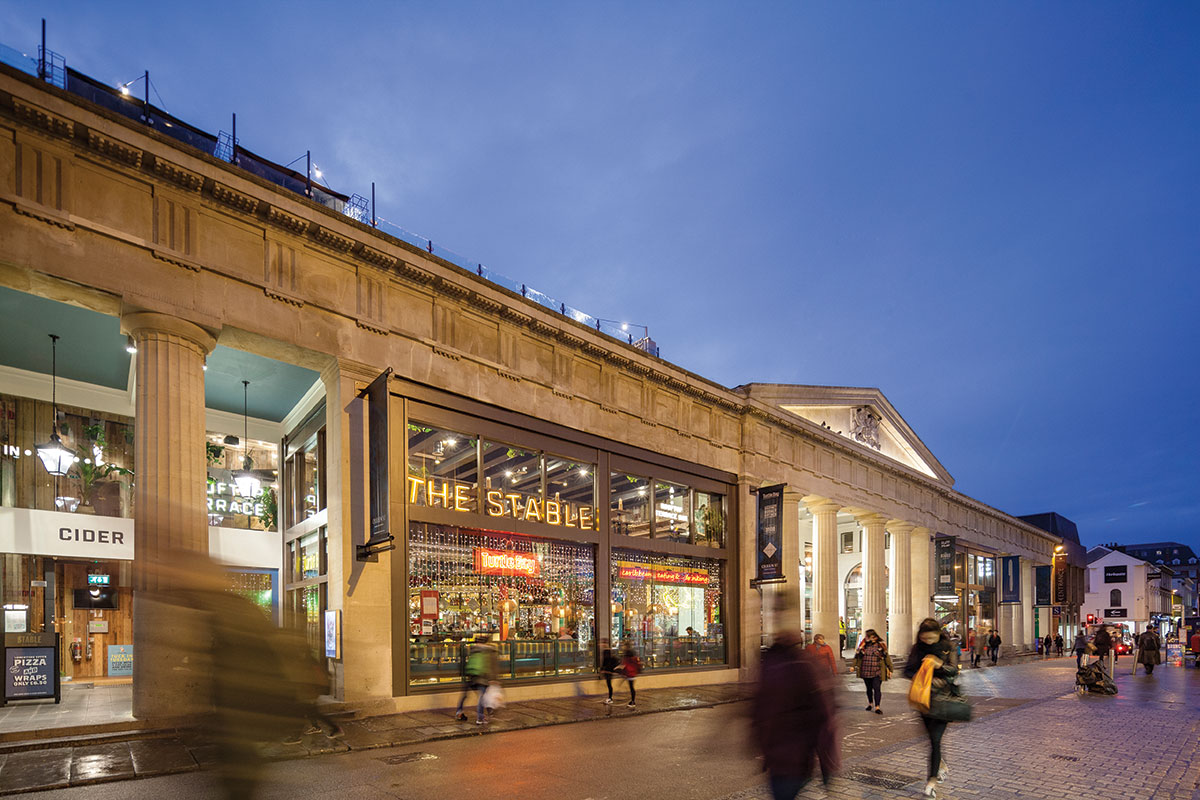
Guildhall Shopping Centre, Exeter, UK
Making projects of this kind a reality is a complex and involved process. It requires the architect to form a tightlyknit collaborative relationship with the client, contractor and a range of stakeholders including planners, the conservation officer and groups such as Historic England. When more radical alteration or intervention is integral to a project’s success, the importance of building strong relationships and journeying together through the design process becomes greater.
Two recent award-winning projects demonstrate how sensitively handled collaboration enabled bold adaptive reuse of listed historic buildings, bringing new life to these structures and their settings.
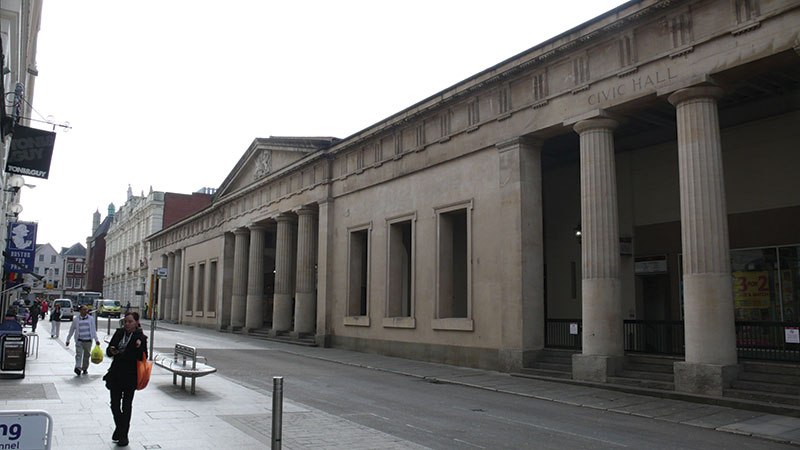
Exeter’s Guildhall Shopping Centre was completed in 1977 in a demolished area of the historic city. Its recent modernisation includes replacement of several buildings, refurbishment of others and extensive public realm improvements including a new and vastly improved setting for a small 13th century church. Located at the heart of the centre, St Pancras Church has become a focus for lunchtime concerts and arts events.
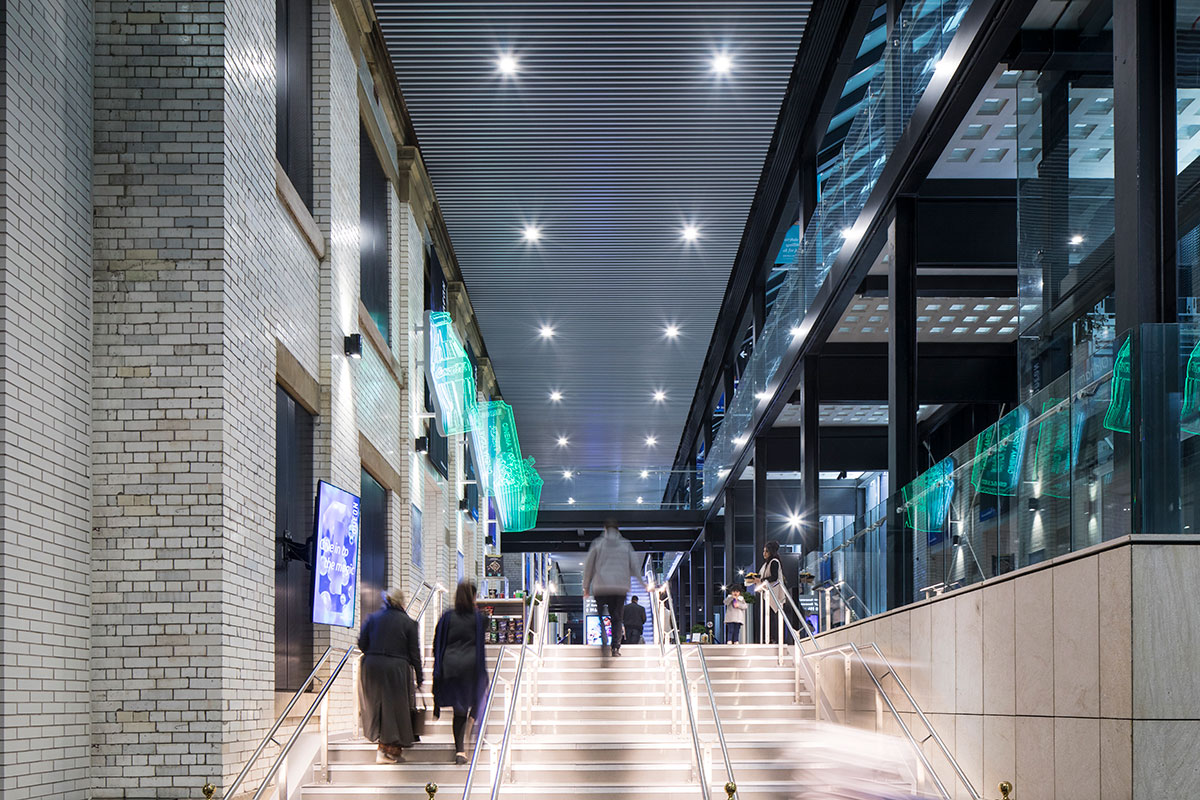
Oldham Town Hall, UK
The Grade II* listed Higher Market and Ambulatory on Queen Street was originally completed in the 1830s to a design by Charles Fowler, architect of Covent Garden Market in London. Reconceived as a culinary quarter in order to shift the focus of the Guildhall Centre, its Queen Street façade has been opened up to provide an active frontage where previously there was none. This ambitious intervention involved the insertion of two large bronzeframed windows creating the focal point for a new culinary and dining destination whilst preserving the integrity of the impressive historic façade. Now rebranded as Queen Street Dining the revitalised centre has attracted eight first-class restaurant operators which have already enhanced Exeter’s growing reputation as a food-led destination.
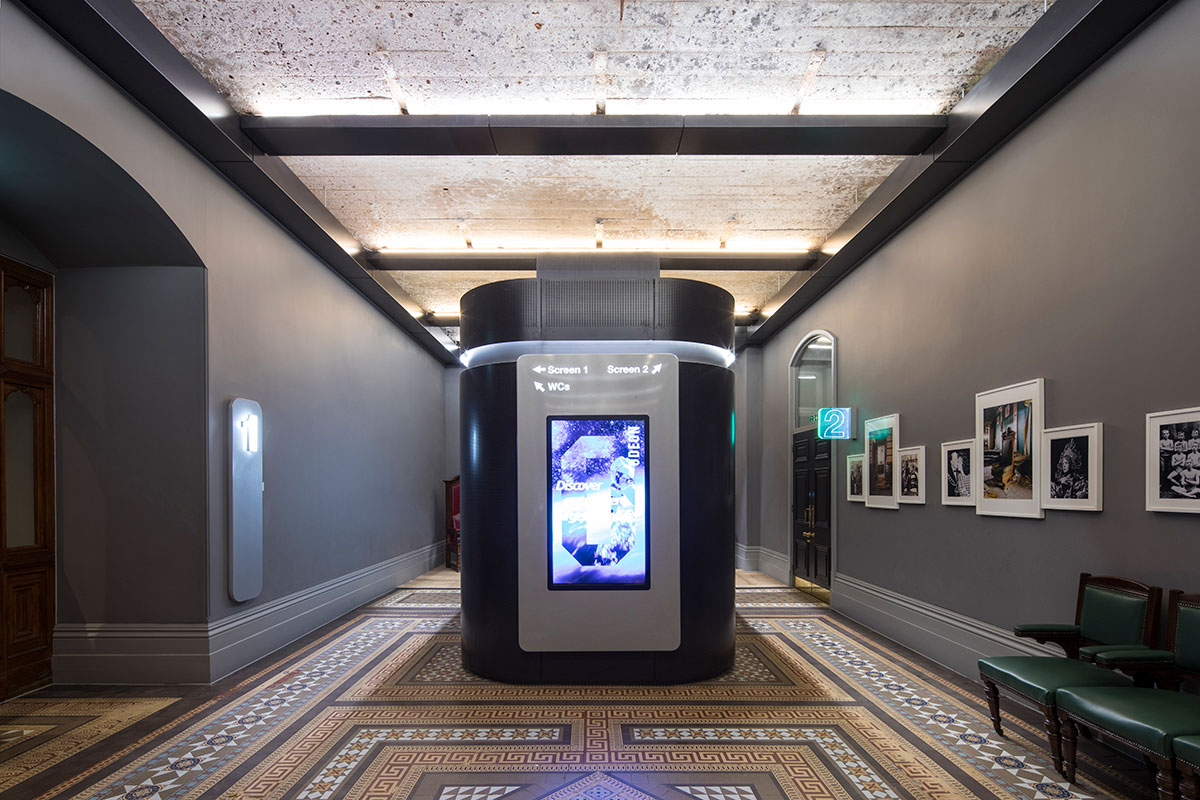
Oldham boomed during the industrial revolution and at its zenith, boasted spinning more cotton than France and Germany combined. Its fine Grade II listed Georgian neoclassical town hall was built in three phases between 1841 and 1917 and sits proudly at the heart of the town. However, after being vacated 30 years ago, failure to find a viable new use resulted in deterioration of the building to the extent that it was registered in the ten most endangered buildings in the country.
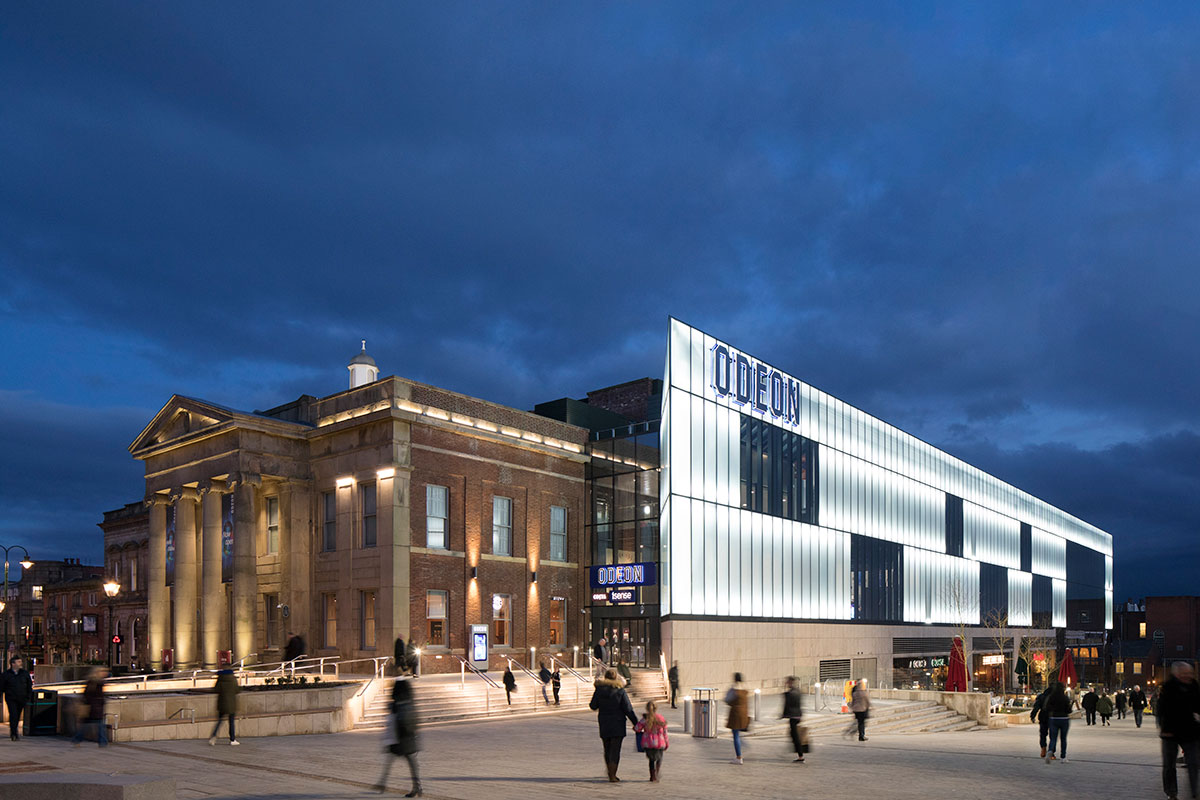
Oldham Town Hall, UK
The new design brings together cinemas, entertainment and dining within the restored building. Cinema auditoria are strategically positioned within the original structure with other restored elements becoming dining or entertainment venues. However, the most radical intervention is a contemporary crystalline lightbox extending the length of one side of the building. Formed from stone and glass, it contains meeting, social and circulation spaces and unlocks the complexity and contradiction of the original building’s myriad of multi-levelled spaces. Overlooking a newly formed public square, it provides a vivid new identity for the
reborn building and a cultural catalyst in the heart of the town.
The fusion of new and old, innovation and tradition, is what makes the design special. Oldham now has a unique entertainment venue at its heart to mark a new beginning for the town.
As Winston Churchill, first elected in 1900 as MP for Oldham, once said:
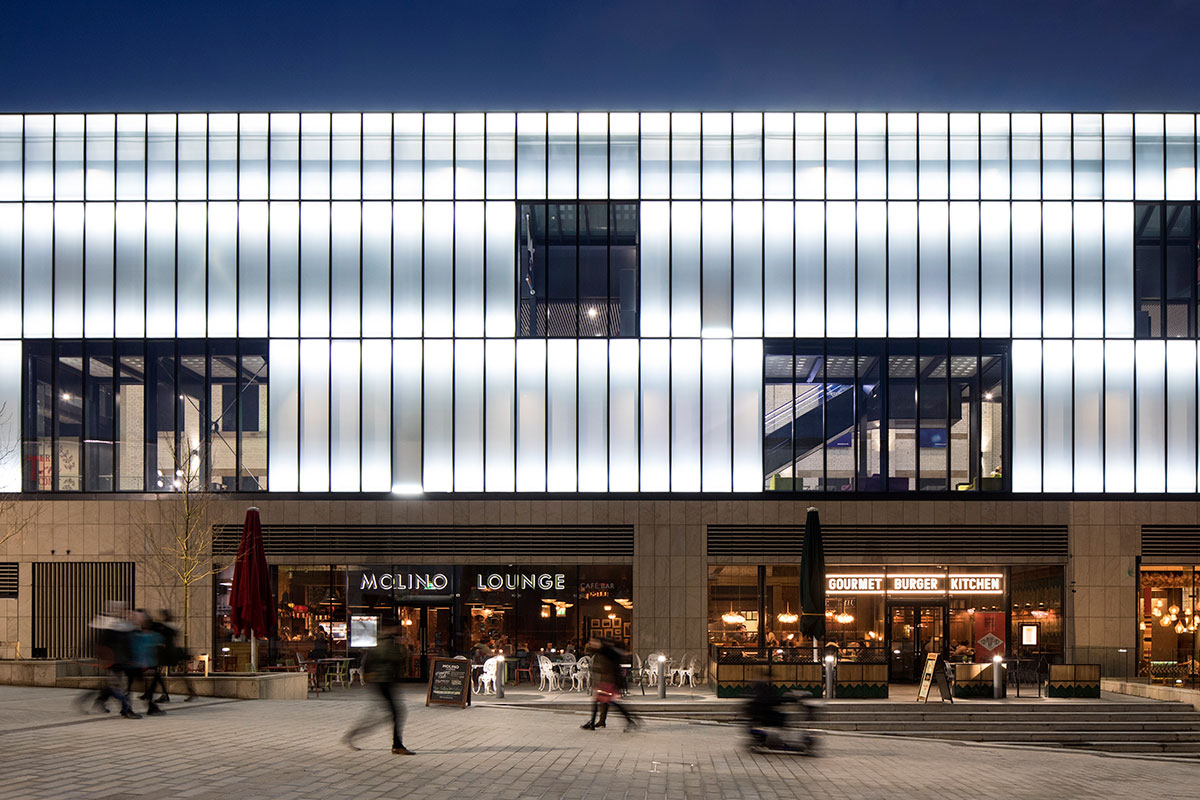
We shape our buildings; thereafter they shape us.
Winston Churchill